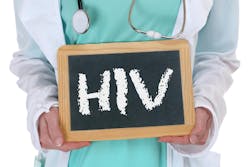New report documents increase in HIV drug resistance to dolutegravir
The World Health Organization’s (WHO) latest HIV Drug Resistance (HIVDR) Report tells us where drug resistance is growing and offers recommendations for countries to monitor and respond to the potential challenges.
The report highlights high levels of HIV viral load suppression (>90%) in populations receiving dolutegravir (DTG)-containing antiretroviral therapy (ART). However, observational and country-generated survey data indicate that levels of HIVDR to DTG are exceeding levels observed in clinical trials.
However, among the four surveys reported, levels of resistance to dolutegravir ranged from 3.9% to 8.6% and reached 19.6% among people experienced with treatment and transitioned to a DTG-containing ART while having high HIV viral loads. To date, only a few countries have reported survey data to WHO.
Haiti was the only country to report data from a survey of HIVDR among ART naïve infants or infants starting ART for the first time. One infant, whose mother had received DTG-based ART, was found to have DTG resistance. Effective management of high viral loads among pregnant and breastfeeding women is critical to prevent transmitting HIV to infants. Increasing routine surveillance for HIVDR among infants newly diagnosed with HIV not yet taking HIV treatment will be important to guide appropriate ART options for the future.
In 2022, more than 75% of the 39 million people living with HIV globally were receiving HIV treatment. Countries have implemented the WHO recommendations with 116 of 127 having adopted WHO preferred first-line DTG-based treatment for adults and adolescents, and 74% of reporting low- and middle-income countries adopted viral load monitoring for adults and adolescents.
But progress towards the SDG targets has stalled as there were still an estimated 1.3 million new HIV infections and 630 000 deaths from HIV-related causes. Between 2017 and 2022, for most countries reporting through the Global AIDS Monitoring (GAM) system, programmatic quality indicators for HIV treatment did not achieve established global targets, which further highlights the need to proactively improve the quality of HIV treatment and care services.
In 2022, only 12 of 45 WHO focus countries reported conducting surveys or had integrated the monitoring of HIVDR early warning indicators into routine monitoring and evaluation systems. Many countries continue to miss the mark when it comes to optimizing retention in care, population-level viral load suppression, and switching people with virological failure to different regimens. Additionally, antiretroviral drug stock-outs continue to happen which may negatively impact patient treatment adherence.
The report also documents cases of resistance to integrase-strand transfer inhibitors (INSTIs) after recent exposure to cabotegravir (CAB-LA). Delayed detection and confirmation of HIV infection can increase the risk of developing resistance to INSTIs. Since 2022, WHO has recommended the use of long-acting injectable CAB-LA as an additional HIV prevention option for people at substantial risk of HIV infection.
Despite the possible risk, WHO recommends the roll-out of CAB-LA for pre-exposure prophylaxis (PrEP) and calls for the scale-up of PrEP to be accompanied by standardized surveillance of drug resistance among people testing positive for HIV while receiving PrEP.





